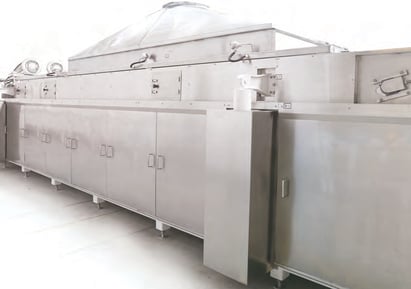Instant Noodles Plant
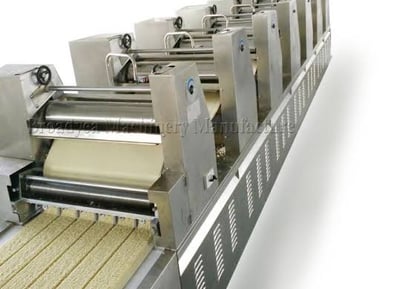

.From grain to the perfect noodles, we have revolutionized the production of fried instant noodles with our cutting-edge process. Our fully automatic production line showcases continuous dough preparation and an advanced centralized control system, setting unprecedented standards in the noodle industry. Drawing on our extensive expertise in pasta processing, our instant noodle lines are meticulously designed to adhere to the highest hygiene and food safety protocols, ensuring quality and reliability. We are committed to providing dedicated service worldwide, continuously striving for innovations that foster a healthier, safer, and more sustainable future in food processing. Through our advances, we not only enhance the quality of noodle production but also contribute to a better world.the forefront of the noodle industry, we have revolutionized the production of fried instant noodles with our state-of-the-art process. Our fully automatic production line incorporates continuous dough preparation and a centralized control system, ensuring top-notch efficiency and quality. Drawing from our extensive expertise in pasta processing, we have meticulously designed our instant noodle lines to comply with the highest standards of hygiene and food safety. Committed to serving our global clientele, we prioritize innovations that contribute to a healthier and more sustainable world. With a strong focus on safe processing solutions, we aim to elevate the standards of noodle production while delivering excellence at every stage, from grain to the perfect noodles
Dough preparation.
A system with state-of-the-art technology.
Continuous dough mixing system.
High quality dough preparation starts with maximum measuring accuracy of the loss-in weight dosing scale. The universal control system with intelligent weighing algorithms guarantees accurate dosing results and accurate water proportioning, which ensures the best possible starting point for the mixing process. The high speed mixer moistens flour particles with the right amount of liquid for an even hydration, and this is key to preparing a homogenous dough for premixing. This prepared raw material is then fed from the high-speed mixer into the main mixing trough where two counter-rotating shafts enable paddles to continuously mix the material. Depending on desired properties, angles of the paddles can be adjusted to accommodate retention times.
The entire dough mixing system consists of four machines operated by one control system, designed to meet the highest dough quality requirements and operational safety, while reducing operation costs at the same time. Due to its closed system, the highest standards of hygiene and
food safety can be ensured.
An accurate, fast response control system can secure and control the impact of minimum changes in raw material and water dosing. The option to add additives with a micro dosing scale rounds out this advanced continuous mixing system
Dough Preparation
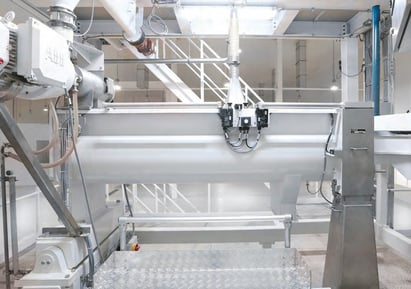

Double-shaft mixing trough.
Continuous mixing brings high quality dough.
Dough mixer in cleaning position.
The double-shaft mixer processes the flours of raw material which is then combined with water and additives for the production of dough. It's human- center design enables easy machine interaction, giving this solution high accessibility for maintenance and cleaning that complies with today’s requirements for modern noodle production.
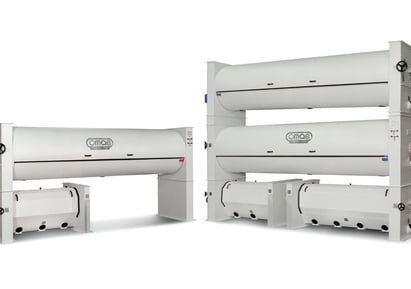

Double-shaft mixing trough.
Dough sheeting system.
From dough to a perfect dough sheet.
Stable dough sheeting as a continuous process.
From mixed dough to the dough sheet, a continuous lamination transforms dough balls into a perfectly homogenous dough sheet. The position of the dough sheet is maintained by an automatic adjustment of the roller speed at each section, which guarantees an even thickness with the highest accuracy while also reducing waste. Every step in this process is designed for the highest levels of hygiene requirements and operational safety, as well as cleaning accessibility. The force ratio is adjustable and this enables an even, gluten matrix of dough sheet forming for the perfect product quality.
Dough Sheeting System
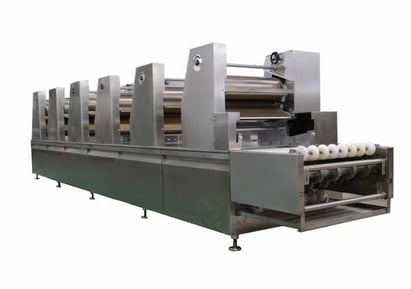

Steaming System.
A process to achieve the adequate gelatinization.
Changing the granule structure by steam-cooking.
The starch contained in wheat flour has an intricate molecular structure that makes it difficult for digestive enzymes to prevent fast rehydration of noodles. Adding water and applying heat helps to change this structure and turn it into a gelatinized starch, providing a structure which will rehydrate quickly. After the rolling process, the sliced noodle units are transferred onto a mesh conveyor which passes them through the steaming channel. The noodles are then cooked for one to three minutes by steam at ambient pressure. The cooking temperature at this stage generally ranges from 98°C to 100°C, and it takes one to three minutes to pass through this stage of production.
Depending on space limitations, the steamer is variable in its design, to ensure the required gelatinization degree by adjusting the length and number of levels.
.
Steaming System.
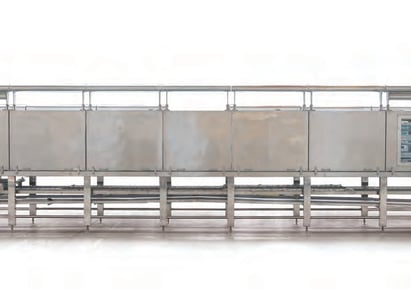

Frying System.
A key process that guarantees the best taste.
Frying will solidify the gelatinous state of starch.
To dry a noodle cake and give the noodles a unique taste, the frying process is a key step in the production of fried instant noodles. The main quality parameters such as rehydration rate and viscoelastic texture can be influenced by frying time and temperature. The noodles are fried in heated oil at 140 to 160°C, for 90s to 180s, depending on the shape and weight of the noodle cakes. At this stage, the moisture content of the noodles usually ranges from 30 to 50%, which can then be reduced to a moisture content between 2 and 5%. At the same time, the oil content is influenced by the frying time, normally ranging from 15 to 20%.
The system used to heat the oil is an indirect method through a heat exchanger, preferably designed for use with high pressure steam, in order to guarantee a full food safe operation. The complete heating system is automatically controlled by the centralized control system that ensures a temperature accuracy of ±1°C within the frying unit. The two-stage filtering process is another component of the frying process, with a coarse and fine filter that enables the operator to have a continuous cleaning, with continuous replenishment and food safe oil conditions. In addition, the efficiency of the heat exchanger and oil
usage can be increased; and consequently, the consumption of steam is reduced. An advanced piping route and structural design completes this process and ensures a uniform oil temperature and reduced amount of oil within the frying trough.
Noodle cakes of all weights and forms (dropped and folded) require different kinds of processing in order to meet market demands.
Frying System.
